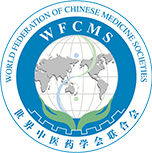Traditional uses and phytochemical constituents of Cynanchum otophyllum C. K. Schneid (Qingyangshen)
Release time: Feb 27,2023
Reading volume: 728
Abstract:
The roots of the plant Cynanchum otophyllum C. K. Schneid (Apocynaceae), known as Qingyangshen in Chinese, are used for a long time as a traditional medicine by different ethnic communities in the Yunnan province (China). The multiple properties and applications of this herbal medicine have been analyzed. C. otophyllum is a perennial herbal liana, nonedible, and generally wild harvested. A cultivation method has been proposed to increase the fruit set level. Qingyangshen is used essentially to treat epilepsy, rheumatism, or other inflammatory diseases. The plant can be found also in diverse polyherbal preparations used in cosmetic or as food supplement (detox products), and in phyto-preparations claimed to reduce hair loss. The plant is a rich reservoir of C-21 steroidal glycosides. Many bioactive compounds have been isolated from this plant and some of them have been pharmacologically characterized, such as otophyllosides, cynotophyllosides, cynanotins, cynotogenins, cynanchins, all briefly evocated here. The plant presents also interesting features in other domains. In particular, leave extracts of C. otophyllum C. K. Schneid contain proteases which are exploited for the local preparation of a cheese-like milk cake. Qingyangshen herbal preparation can be useful to treat epilepsy and inflammation. It has applications beyond medicine in the cosmetic and food industry.
Keywords: Cynanchum, epilepsy, medicinal plant, steroidal glycosides

